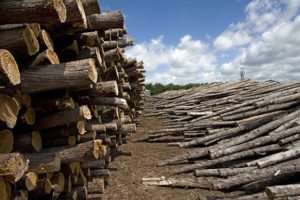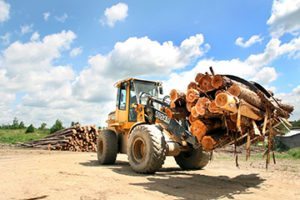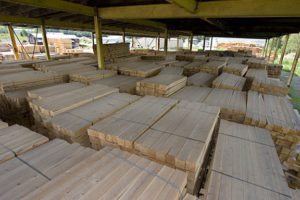At Katahdin we know quite a bit about cedar! Now—more than ever—cedar is an excellent species to select to build your new log home. Here are seven reasons why cedar is still the smart choice:
Katahdin we know quite a bit about cedar! Now—more than ever—cedar is an excellent species to select to build your new log home. Here are seven reasons why cedar is still the smart choice:
- Sourced in the USA — Softwoods like cedar and pine are sourced from many different locations. The source of our Northern White Cedar is around 85% from U.S suppliers, and 12-15% from Canada. Because we source most of our logs from forests on this side of the Canadian border, we can save money by avoiding expensive import tariffs. Other softwoods, like pine used in log homes and as dimensional lumber can face 20% added costs due to import tariffs from Canada. By sourcing, processing and milling US Northern White Cedar, we can keep our prices down for the biggest element of your home, the cedar!
- Cedar is Sustainable—Northern White Cedar is harvested in northern Maine, Michigan and Wisconsin. It flourishes in both cold weather and warm, grows in swampy areas, but is also drought tolerant. Maine’s cedar forests are actively managed to maintain biodiversity without the need for man-made fertilizers or irrigation. Once harvested, cedar regrows naturally, without the need to plant, irrigate or otherwise farm. Its natural oils protect it from insects, mold and fungus that can affect the quality of wood in the tree.
- Climate Change Resilience — Because northern white cedar flourishes naturally in a wide range of conditions, excess rainfall, drought,
 warmer or colder temperatures have little short-term effect on cedar growth. Over the longer term, as average temperatures rise, cedar growth may tend to migrate north towards cooler temperatures.
warmer or colder temperatures have little short-term effect on cedar growth. Over the longer term, as average temperatures rise, cedar growth may tend to migrate north towards cooler temperatures. - Winter Harvesting Jobs— Cedar trees are typically harvested when the ground is frozen. These winter cedar harvests keep forest workers busy throughout the winter, allowing them to maintain a steady income outside of warmer months when other timberlands are harvested.
- Pine, Disease and Droughts — Many southern states cultivate vast plantations for yellow pine, used in dimensional lumber and for log homes. It requires a lot of fertilizer, irrigation and other intervention to grow and harvest pine, which is susceptible to disease, insects and slow, stressed growth during droughts. One company in the West is marketing their log homes constructed from dead standing pines that have been killed by a combination of the pine beetle and drought conditions. While some of these pine logs are indeed dry without the need to kiln dry them, they still have no natural defenses against mold, fungus and insects.
 Dry Cedar Logs — Green cedar has about half the water than green pine. Cedar can air dry to a desirable 14-16% in as few as three months, with a brief finishing in the kiln. Air drying has advantages over kiln drying because the wood is able to shed moisture and reach equilibrium with surrounding air slowly. Kiln drying removes water from pine, but at the expense of rupturing cells and weakening the wood fibers. Air-dried logs also mean much less energy consumed to fire a large drying kiln. In fact, Katahdin actually operates its finishing kiln using recycled cedar shavings to heat an industrial biomass boiler. The finishing kiln brings the average moisture level of Katahdin’s cedar to 12%, an ideal level for building.
Dry Cedar Logs — Green cedar has about half the water than green pine. Cedar can air dry to a desirable 14-16% in as few as three months, with a brief finishing in the kiln. Air drying has advantages over kiln drying because the wood is able to shed moisture and reach equilibrium with surrounding air slowly. Kiln drying removes water from pine, but at the expense of rupturing cells and weakening the wood fibers. Air-dried logs also mean much less energy consumed to fire a large drying kiln. In fact, Katahdin actually operates its finishing kiln using recycled cedar shavings to heat an industrial biomass boiler. The finishing kiln brings the average moisture level of Katahdin’s cedar to 12%, an ideal level for building.
- Cedar’s Insulation Properties — Building a cedar home to meet current insulation standards for homes is made even easier because of the enhanced insulation qualities of cedar. Cedar has the highest R-value (1.41 per inch) among species used for log homes. That difference gives cedar log home owners a head start when adding insulation to save energy! And because cedar starts out drier, it provides an incredibly stable log when compared to pine. Cedar’s natural insulation is easily enhanced with Katahdin’s Energy Envelope System® to improve comfort and keep your energy bills down.
Selecting the right log species is one of the most important decisions when you’re looking for stable pricing, natural defenses and ability to insulate to reach maximum energy efficiency. For more information about Katahdin’s cedar, click here.
